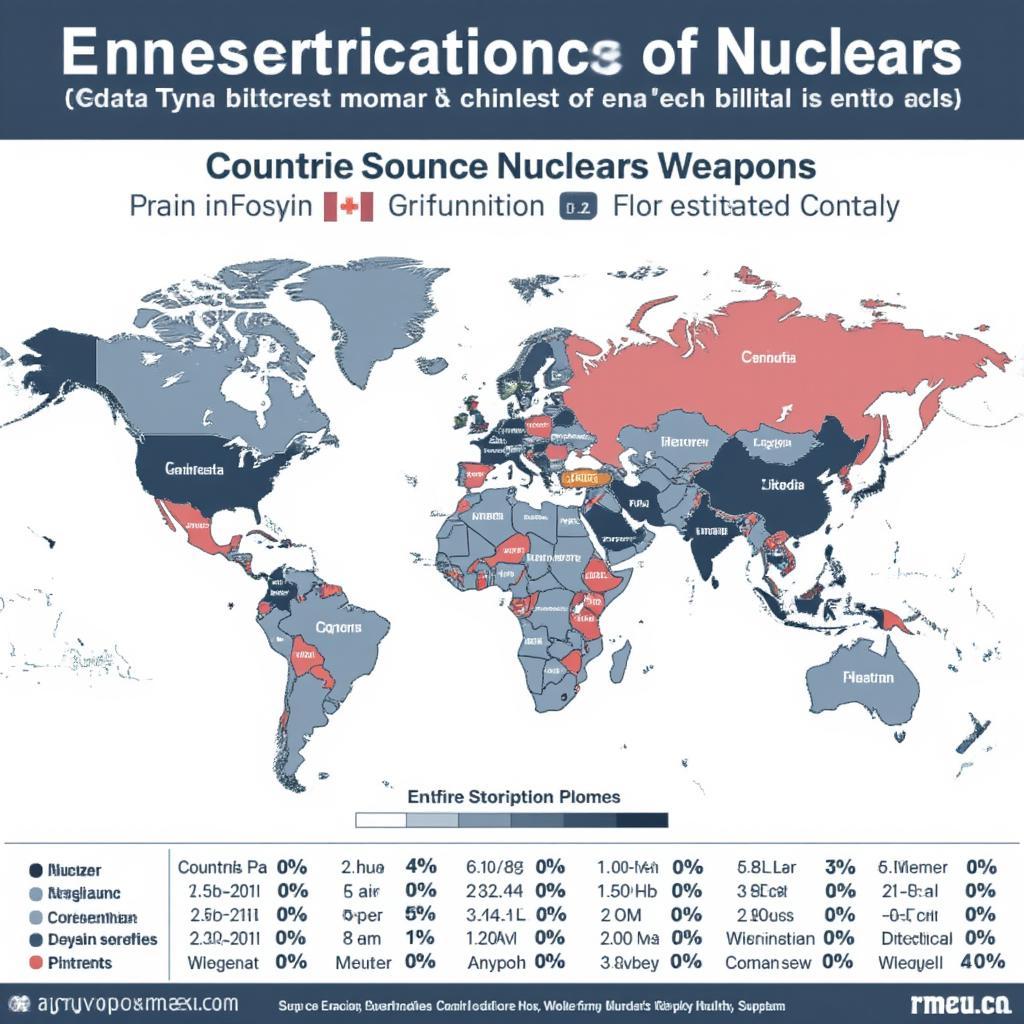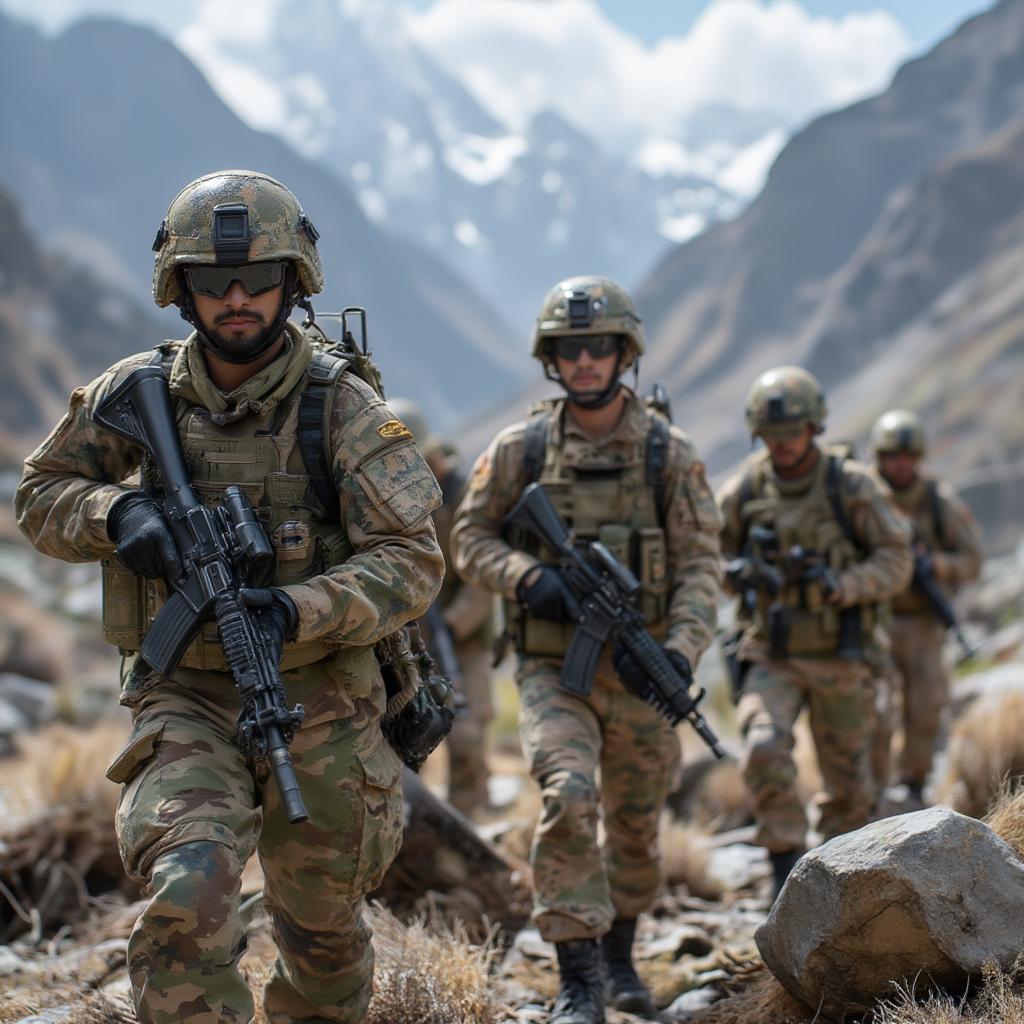Global Firepower Ranking 2022: A Deep Dive into Military Strength

The Global Firepower Ranking 2022 provides a fascinating glimpse into the military capabilities of nations worldwide. This ranking, based on over 60 factors, assesses each country’s conventional warfare strength, ignoring nuclear capabilities and geographic factors like current political and military leadership. While not a definitive measure of true military power, it offers valuable insights into global military landscapes and sparks discussions about defense strategies, geopolitical influences, and the ever-evolving nature of warfare.
Understanding the Global Firepower Ranking
The Global Firepower index uses a unique PowerIndex score, with 0.0000 being the “perfect” score—a practically unattainable ideal. This system penalizes nations for lacking certain capabilities while rewarding diversity and redundancy in military resources. The ranking considers a wide array of factors, including manpower, land systems like tanks and artillery, airpower encompassing fighters and helicopters, naval strength, natural resources, finances, logistical flexibility, and geographical factors. It’s important to note that the Global Firepower ranking 2022 doesn’t solely focus on raw numbers. For example, a large but outdated tank force wouldn’t score as high as a smaller, more modern, and technologically advanced one.
What does the Global Firepower ranking 2022 really tell us? It offers a snapshot of conventional military strength, highlighting potential strengths and weaknesses. It’s a tool for comparing nations on a level playing field, albeit a simplified one. It’s crucial to understand that this ranking doesn’t predict battlefield outcomes. Real-world conflicts are far more complex, influenced by factors like troop morale, strategic leadership, and the unpredictable nature of war.
Key Players in the 2022 Ranking
The United States consistently holds a top position in the Global Firepower ranking. Its vast military budget, technological advancements, and diverse military assets contribute significantly to its high score. However, other nations are rapidly modernizing their forces. China, with its growing economic and military might, is another key player, investing heavily in advanced weaponry and expanding its naval presence. Russia, despite economic challenges, maintains a formidable military, especially in its nuclear arsenal, which is not factored into the conventional power ranking.
What are the limitations of the Global Firepower Index?
While comprehensive, the index has limitations. It doesn’t fully account for a nation’s nuclear capabilities, cyber warfare prowess, or the effectiveness of its special forces. These factors play an increasingly crucial role in modern warfare. Moreover, the weighting of different factors might not perfectly reflect their real-world impact. For instance, the relative importance of manpower versus technological superiority is a subject of ongoing debate.
“The Global Firepower ranking provides a valuable starting point for understanding military strengths but should be analyzed in conjunction with other geopolitical and strategic factors,” says Dr. Amelia Sharma, a geopolitical analyst at the Institute for Strategic Studies.
Beyond the Numbers: Geopolitical Implications
The Global Firepower ranking 2022 also sheds light on broader geopolitical trends. The rise of Asian powers like China and India reflects shifting global power dynamics. Regional rivalries, such as those in the Middle East and East Asia, also influence military spending and modernization efforts. The ranking underscores the importance of alliances and partnerships in enhancing military capabilities and projecting power on the global stage. Analyzing the ranking in the context of current events and geopolitical tensions provides a deeper understanding of the complexities of international relations.
How do alliances impact global military power dynamics?
Military alliances, like NATO, can significantly bolster a nation’s perceived military strength by pooling resources and fostering interoperability. These alliances also serve as deterrents against potential aggressors, influencing the overall global security landscape. The Global Firepower index, while not explicitly accounting for alliances, implicitly reflects their impact through factors like logistical flexibility and access to shared resources.
“Understanding the interplay between military capabilities and political alliances is essential for navigating the complex world of international relations,” notes General (Ret.) Michael Thompson, former Chief of Staff of the Army. He adds, “The Global Firepower ranking, while providing a snapshot of military strength, should be viewed as one piece of a much larger puzzle.”
The Future of Military Power
The Global Firepower ranking 2022 also prompts questions about the future of warfare. Emerging technologies, such as artificial intelligence, autonomous weapons systems, and cyber warfare capabilities, are transforming the nature of conflict. These technologies are not yet fully reflected in the current ranking methodology, but they will undoubtedly play an increasingly significant role in shaping future military power rankings. The increasing importance of non-conventional warfare capabilities adds another layer of complexity to assessing military strength in the 21st century.
What role will emerging technologies play in future conflicts?
Emerging technologies like AI and cyber warfare will likely redefine the landscape of future conflicts. Autonomous weapons systems raise ethical concerns, while the increasing sophistication of cyberattacks poses a significant threat to national security infrastructure. These advancements are blurring the lines between conventional and non-conventional warfare, making it increasingly challenging to assess military strength solely based on traditional metrics.

Conclusion
The Global Firepower ranking 2022 provides a valuable, albeit simplified, lens through which to view global military capabilities. While it doesn’t tell the whole story, it offers a starting point for understanding the complex interplay of factors that contribute to military strength. By considering its limitations and interpreting the data in conjunction with geopolitical analysis, we can gain a deeper appreciation for the challenges and opportunities facing nations in an ever-evolving security environment. The Global Firepower ranking remains a relevant tool for assessing military power, prompting important discussions about defense strategies, geopolitical influences, and the future of warfare.




